Douglas A2D-1 Skyshark
With the Douglas AD-1 Skyraider operational shortly after the end of the Second World War, the U.S. Navy was already interested in a successor. Because the jet aircraft of that time still had an excessive fuel consumption, the turboprop engine was regarded as a very suitable alternative; in particular for flying at low altitudes.
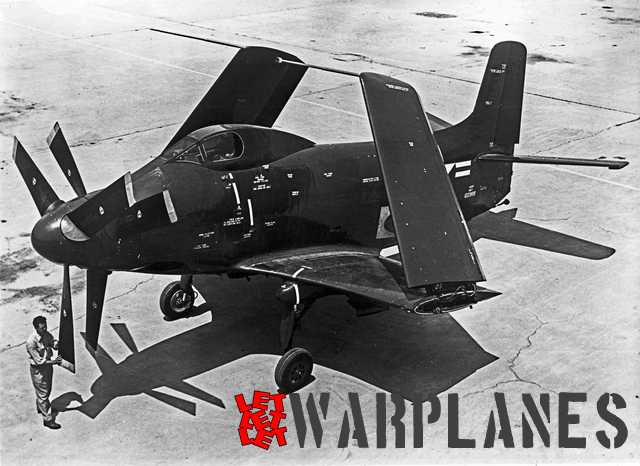
History learns us that the turboprop successor of the Skyraider, the A2D Skyshark, was far from a success and that the AD-1 was finally replaced by another Douglas product that would gain much more fame: the jet-powered A4D Skyhawk!
This is the story of the unsuccessful Skyshark, a type that failed because it lacked a reliable engine….
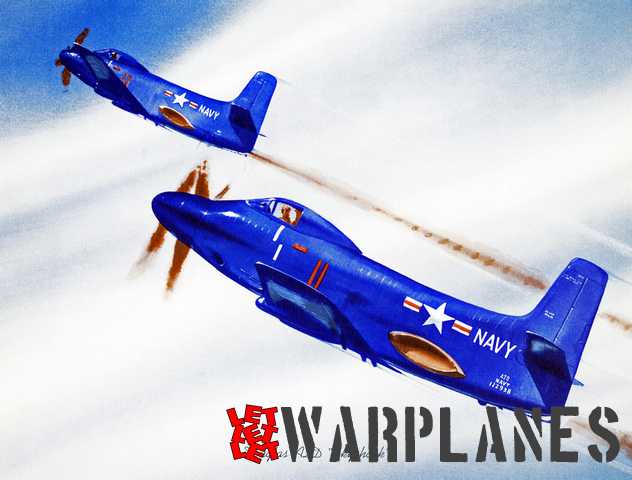
Development and early flight testing:
When the Douglas AD-1 Skyraider prototype made its first flight in March 1945 both U.S. Navy and Ed Heinemann, the chief designer of Douglas, were already thinking of a successor.
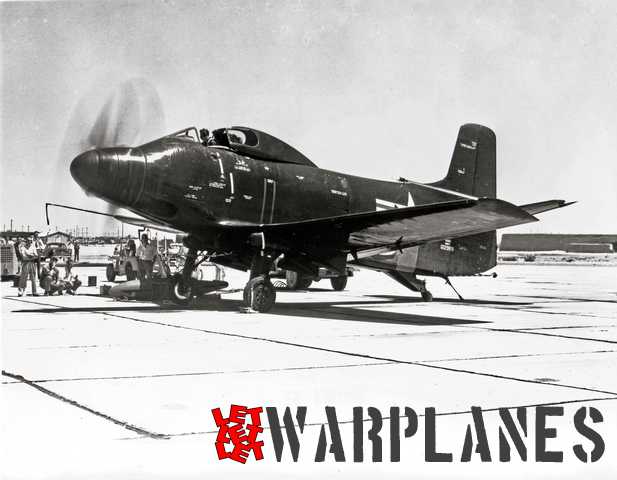
Using the Skyraider airframe several options were studied. These included projects with two nose-mounted Westinghouse 24C jet engines, but also a turboprop engine was considered. The turboprop was a sensible alternative since it was more fuel efficient than a pure jet engine. Also for use from aircraft carriers the turboprop seemed to have advantages. Early turbojets were notorious for their slow throttle response which was essential for a quick restart after a failed landing attempt on an aircraft carrier. The turboprop ran at maximum cruise output and speed could be fully controlled by using propeller pitch setting. The problem was that in 1945 there still was no turboprop engine available offering both sufficient power and reliability. However, there were some promising engine developments. One was the T100 from Westinghouse, offering 2300 hp; the other engine under development was the Allison T40. Since the T40 offered roughly double the power of the TG100, this engine was selected as final powerplant for the Douglas ‘Super-Skyraider’. In fact, the XT40 was a double version of Allison’s experimental XT-38. This engine was based on an axial jet engine as developed earlier in the war. Allison already had experience with coupled piston engines when they developed the V-3420 as a double version of their V-1710 piston engine as used for the P-38 and the P-39 and this company seemed a logical choice for the development of a coupled turboprop. Allison started shortly after the war with design and construction of an experimental unit as the XT40. Each component drove its own special developed Aeroproducts propeller and both propellers were contra-rotating to compensate for engine torque. For economic cruise one of the engine elements could be declutched and switched off with the propeller set in neutral pitch. Both engines drove via short extension shafts a common reduction gearbox. The T40 had an excellent power to weight ratio with a calculated power output of 5100 shaft hp maximally and 4100 shaft hp continuously. Further, the exhausts gave another 376 kg of residual thrust. Later uprated versions were planned that would even give up to 10,000 kg shaft hp! However, development of this engine met a number of gearbox problems in the test running phase and the XT40 ordered for the new Douglas attack bomber was not yet ready and fully tested when the first aircraft prototype was already completed. Although the new machine was initially seen as a Skyraider fitted with a different engine, much more was needed to convert the original Skyraider into a turboprop powered aircraft. Finally only the wing and horizontal tail from the Skyraider were maintained, although the new wing had a much thinner profile. Since it was later regarded as a completely new design, it was given the type designation A2D with as name ‘Skyshark’. The Douglas type designation was D-557.
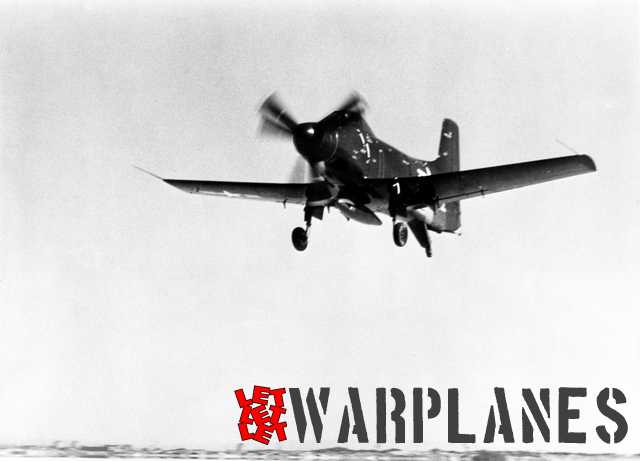
The Skyshark prototype BuNo. 122988 was ready for flight testing with its new engine by May 1950. On the 26th of that month Douglas test pilot George Jansen took the Skyshark in the air for its maiden flight from Edwards AFB. However, this flight lasted for just two minutes. After covering only 8 km directly after lift-off the engines started to vibrate so badly that Jansen made a straightforward landing on the lake bed. Also the next flights were of very short duration and soon aborted after heavy low-frequent vibrations. The first XT40 unit was replaced by a new one and this meant test flying was delayed until 18 October 1950.
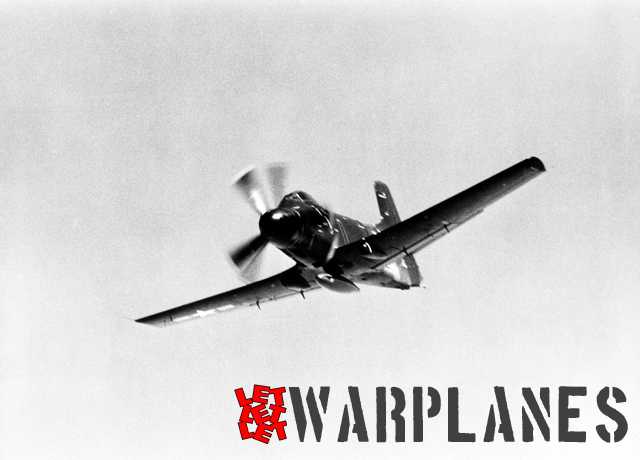
Meanwhile the Korean War broke out and the U.S. Navy needed so badly new modern attack planes that ten production A2D-1’s were ordered with options for more. At this point Douglas started already to set op a production line at their El Segundo plant. The new attack plane was ordered in its production version A2D-1 at a moment the problems with the T40 engine were far from solved. In spite of this, the second Skyshark prototype 122989 was soon ready to join the flight testing at Edwards; although with some delays as we will see. Both prototypes were fully navalized with folding wings and they had even their arrester hook fitted. After initial flight tests, the arrester hook of the first prototype was soon removed. At the next prototype it was removed before first flight at Edwards. Also at the batch of production A2D-1’s that were actually delivered the arrester hook was not fitted and the Skyshark never made any deck landing on an aircraft carrier.
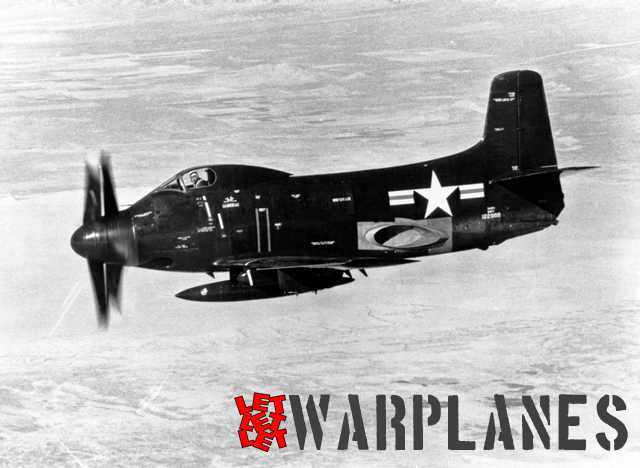
U.S. Navy testing:
The second Skyshark prototype was nearly complete when the first prototype was lost. By early December 1950 the Skyshark prototype 122988 had made a total of 14 flights. During these flights a maximum speed of 765 km/h was reached at an altitude of 8230 m. Around this time, two U.S. Navy pilots and one U.S. Marine Corps pilot started with preliminary evaluation flights from Edwards. They were Cdr. Turner Caldwell, Ltcr. Hugh Wood and Col. Marion Carl. On 19 December 1950 Hugh Wood took of in 122988 for his second flight. After two high-speed dives things went wrong when one of the engine units failed. Woods did not succeed to declutch the engine and the plane went down with a high sinking rate for a very hard landing. The undercarriage was sheared off and a fire broke out when the plane came to a standstill. Unfortunately Woods was killed in this accident. The prototype was almost completely destroyed by the fire.
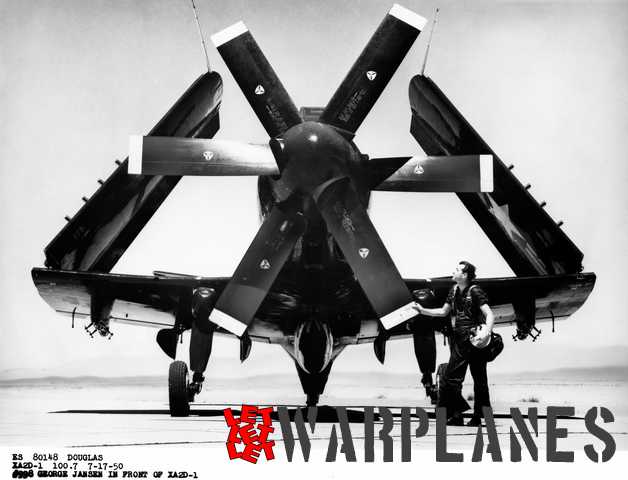
This accident was a serious setback for the testing program since the second prototype 122959 was not ready for final test flying until April 1952. Again, the T40 engine gave problems that needed to be solved before the first flight could be made. Without a plane to test, George Jansen kept himself busy by flying the U.S. Navy P2B-1S (B-29 BuNo. 84029) mothership for the D-558-2 Skyrocket series of record flights made by his colleague Bill Bridgeman.
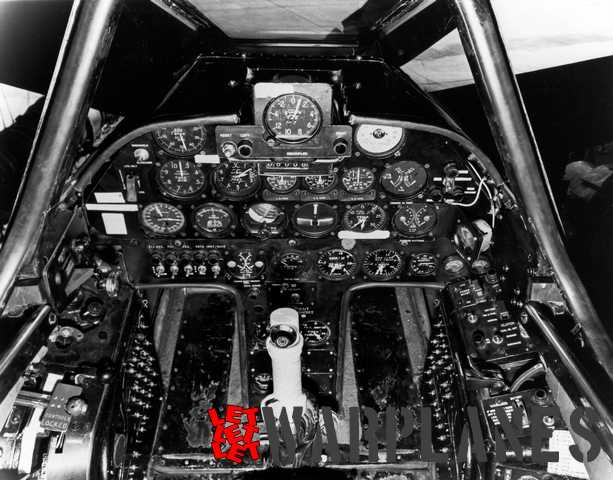
Skyraider no. 2 BuNo. 122989 made its first taxi runs and short hops from the long runway from Hughes Aircraft Co. near Culver City after a series of earlier powerplant failures, engine changes and revisions. The T40 engine continued to give constant problems and the first extended test flight was delayed until 3 April 1952. This day George Jansen made a 35 minutes flight with Skyshark no. 2 in a bright all-silver colour scheme from Edwards AFB. The second prototype had a new flush exhaust on the fuselage sides to reduce the drag of the earlier protruding version. These flush exhausts were also used on the production A2D-1’s where they caused after each flight serious scorching of the paint on the sides of the rear fuselages. Flights continued, but on 14 August the engine had to be replaced because of a propeller failure. It was fitted with an improved YT40-A-6A engine; the final power plant for the production model. However, the gearbox/propeller combination continued to give problems during test flying and the U.S. Navy staff could only conclude that the Skyshark with its troublesome powerplant was unsuitable for final operational service. The clock also kept on ticking, and not in the advantage of the Skyshark! Heinemann had already proposed an all-jet alternative for the Skyshark that would not only be much faster but also had the capability to drop a tactical nuclear weapon. This proved to be a much greater success and became well-known as the A4D (later A-4) Skyhawk.
Meanwhile, the ten ordered production A2D-1 models BuNos. 125479-125488 were delivered but at operational testing the A2D-1 did not score any better than the two prototypes. Also here the same engine problems as with the prototypes were experienced.
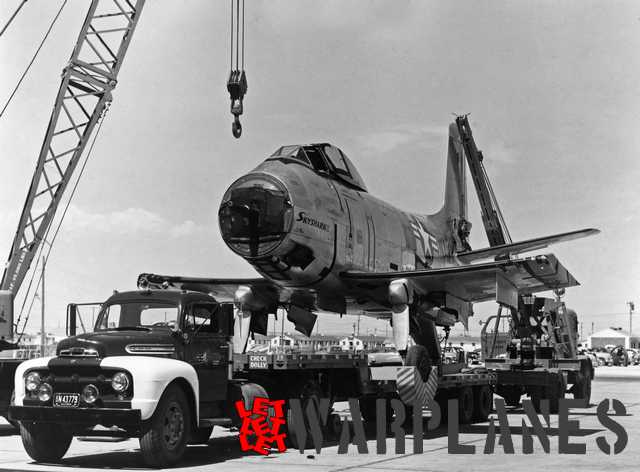
The first A2D-1 supplied was BuNo.125480. It was flown for the first time on 10 June 1953 by George Jansen. Douglas test pilot ‘Doc’ Livingston had with this plane on 27 October 1953 a very narrow escape during a test flight. He lost the complete nose section with the contra-rotating propellers and had to make an emergency landing. Guided by a chase plane he miraculously managed to make a deadstick landing on the lakebed. He failed to shut down the engine and the plane trundled on across the surface of the lakebed still powered by the residual thrust of the T40 engine. Livingston actually had to jump from the plane into safety!
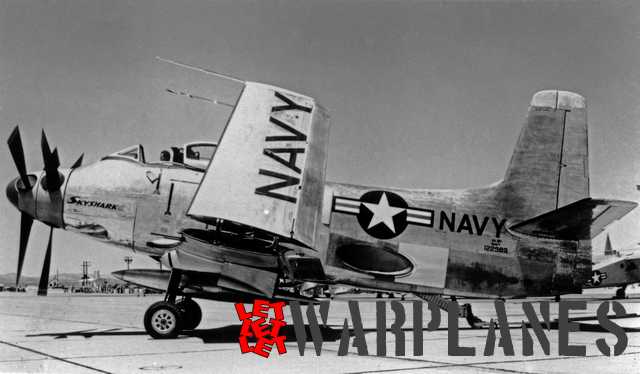
No. 125480 was repaired and resumed its test program until 5 August 1954. This day was the final end of this plane when George Jansen had to bail out when fire broke out after a gearbox failure.
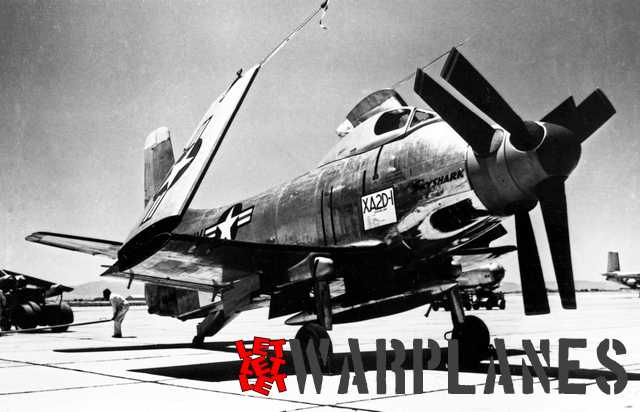
Only six out of the ten production A2D-1’s were actually flown; three of these were bailed to Allison for engine testing, together with the second XA2D-1 prototype. However, when it was evident the T40 turboprop was a failure and further work on this engine was terminated, all flying with the Skysharks soon came to an end. The U.S. Navy terminated the Skyshark project in September 1954. Except one they were all broken up and scrapped.
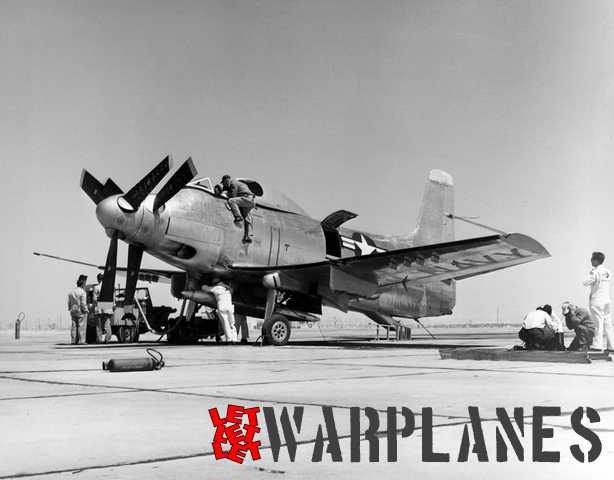
Although it was lower rated than the T40, Allison had much more success with the single unit T56 turboprop. It was extremely reliable and built in large numbers for aircraft types like the Lockheed C-130 Hercules and the Lockheed Electra/Orion….
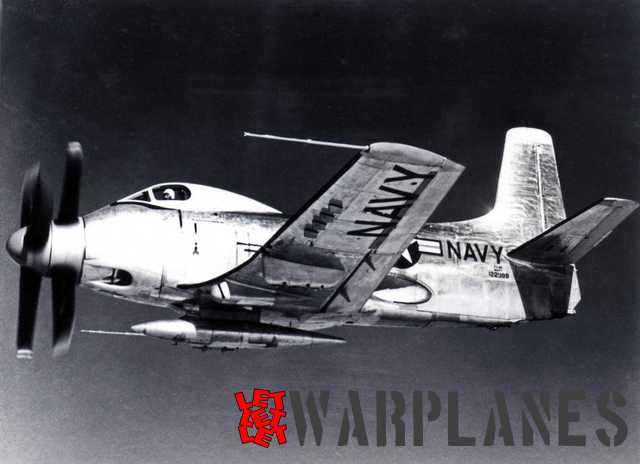
That the Skyshark had impressing performances if the engine ran well was demonstrated on its very last flight in 1955 when BuNo. 125482 set a speed record in its class by covering the distance between Indianapolis and Opa Locka in Florida (1748 km) in 2 hours and 38 minutes. This flight, made by test pilot Bob LeSuer, was the last public appearance of the Skyshark.
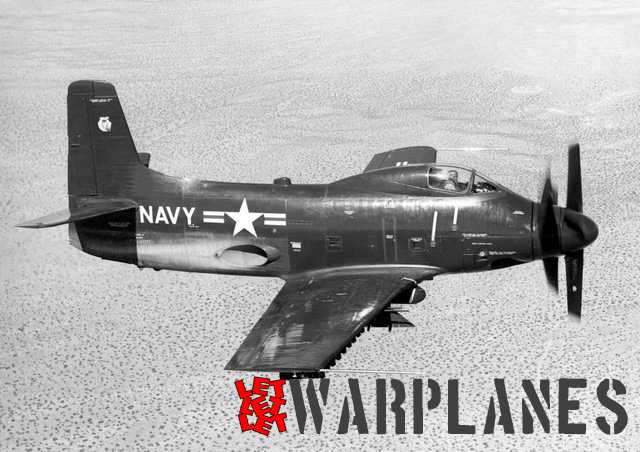
Construction list:
c/n BuNo. Type Details
7045 122988 XA2D-1 crashed on 19 December 1950
7046 122989 XA2D-1 1st flight on 3 April 1952
7590 125479 A2D-1 most likely very little flown
7591 125480 A2D-1 crashed on 5 August 1954
7592 125481 A2D-1 to Allison for engine tests
7593 125482 A2D-1 to Allison for engine tests
7594 125483 A2D-1 to Allison for engine tests
7595 125484 A2D-1 last Skyshark to be flown
7596 125485 A2D-1 not flown; still exists
7597 125486 A2D-1 not flown
7598 125487 A2D-1 not flown
7599 125488 A2D-1 not flown
Total production: 12
BuNos. 127962-128042; 132793-133042 and 134438-134455 (339 A2D-1’s) were on order but cancelled.
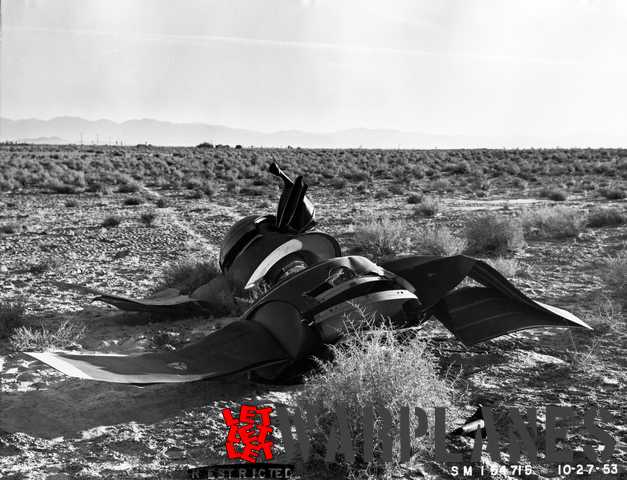
Planned versions:
An improved A2D-2 version had its wings set at a sweep of 35° and was to be fitted with an uprated T40-A-8 engine of 7070 shaft hp. Estimated speed was 775 km/h at 10,668 m. A further version planned for 1955 would have had an T40 uprated to 10,000 shaft hp. With a supersonic propeller it had an estimated top speed of 825 km/h at 10,668 m. Other versions were planned for anti-submarine warfare with a second cockpit behind the pilot, similar to the British Fairey Gannet. Also early warning and night attack versions were already planned but none of these developments ever materialized.
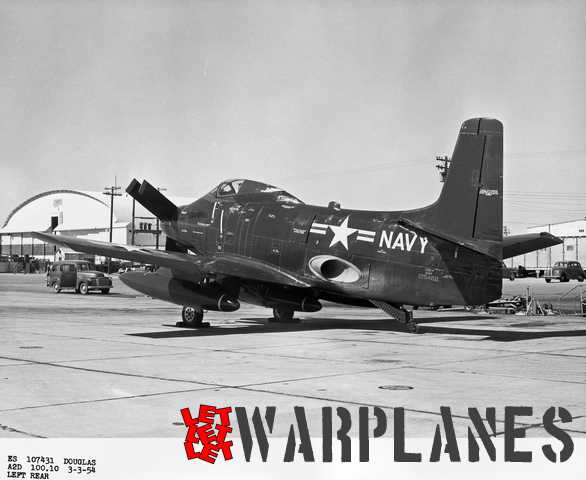
Survivors:
One Skyshark, BuNo. 125485, still exists. It was one of the four last production models that were never flown. It was stored at Douglas minus its powerplant. Later it was moved to Los Angeles international airport (LAX) for ground radar calibration provisionally fitted with a Skyhawk nose. It was planned to be used for fire fighting exercises, but luckily the plane escaped further demolition when it was acquired by Ed Malony. Malony sold it later to a private owner. In the nineties it was fitted with a provisional sheet metal engine intake and a new double propeller. It is now on display at the Pacific Fighters exhibition near Idaho Falls Regional Airport in its original dark sea-blue colour.
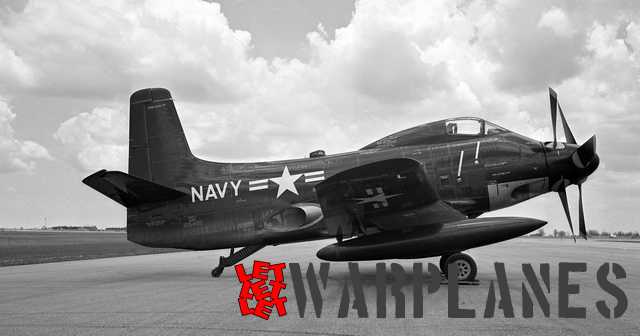
Note on test pilot George Jansen:
Douglas test pilot George Jansen, being from Dutch ancestry, was born in 1921 and started to fly at a very young age. In the war he flew bomber missions over Germany on the B-24. After the war he joined Douglas Aircraft Co. as a test pilot after he graduated in 1951 from the Air Force Test Pilot’s School at Edwards Air Force Base. Except the Skyshark he flew many other Douglas types like the Skyraider, F3D Skyknight, the B-66 and the DC-9. He died in 1991 at the age of 70.
Camouflage and markings:
The first prototype Skyshark was painted in all-over standard U.S. Navy non-specular dark sea blue with all lettering in white. Also the production A2D-1 Skysharks that actually reached the flying phase had these standard colours and markings. The space around the exhausts was not painted. From photos it was evident that the rear fuselage painting was after some flying scorched by the heat of the exhaust. The second prototype no. 122989 had an all-over aluminium scheme with the name ‘Skyshark’ painted on the nose. Initially it was also painted in all-over non-specular dark sea blue, with the name ‘Skyshark’ in white lettering. The blue scheme was replaced by the all-metal scheme before it went to Edwards for its 1st flight.
Tips for the model builder:
The French Mach 1 has a 1/72 limited edition injection moulded kit of the Skyshark. As usual for these kits it has quite a lot of flash, a coarse surface and no locating pins for fuselage halves and wings. All we can say it is a kit with ‘built-in challenges’ for the more experienced builder and it needs a lot of attention before it is finished.
Merlin models also had a limited production 1/72 kit but this is of very poor quality.
There have been in the past some vacform kits, amongst others from Airmodel that can be better forgotten. Raraplanes also released this kit in the past and this one was not all too bad; at least general accuracy is reasonable.
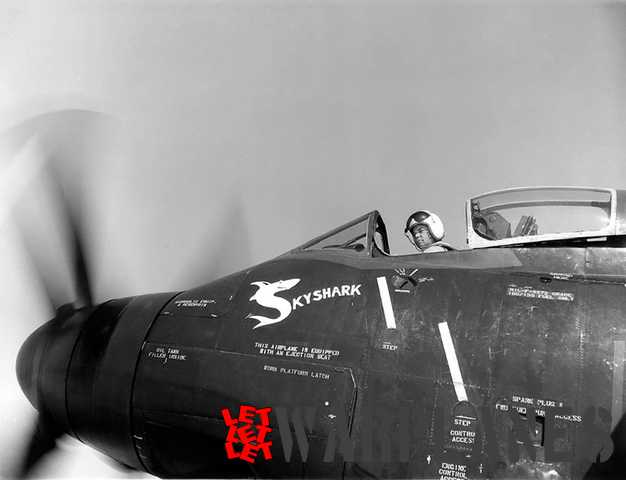
The Skyshark figure and name are remarkable.
Technical details (XA2D-1):
Power plant: Allison XT40-A-2 coupled turboprop, max. 5100 shaft hp
+376 kg residual thrust from the exhaust
Dimensions:
-wing span 15.24 m
-length 12.56 m
-height 5.20 m
-wing area 37.16 m2
Weights:
-empty 5871 kg
-gross take off 8491 (max. 10,417 kg)
Performances:
-max. speed 806 km/h at 7620 m (calculated but never reached at flight testing!)
-range 1025 km combat range; max. range 3540 km
-service ceiling 14,460 m
Armament: four 20-mm T31 cannon in the wings with 200 rounds per gun;
offensive armament fitted at 11 hard points under each wing.
The three major stations (one underneath the fuselage and one under each inner wing) could carry a 200-lb bomb, a torpedo, a rocket, or a 300 US-gallon drop tank. The minor outer underwing stations could each carry a single 5-inch HVAR rockets or smaller bombs. Maximum external ordnance load was 2495 kg.
Radar: provision to carry an AN/APS-19A radar, with the scanner being located inside the extreme nose of the propeller spinner.
Nico Braas
Literature:
-Francis Allen, Shark with no teeth-the story of the Douglas A2D Skyshark, Air Enthusiast no. 53, p.69-75 (1994)
– Rene J. Francillon, McDonnell Douglas Aircraft Since 1920, Vol 1, Putnam UK (1988)
-Gerry Markgraf, Douglas Skyshark A2D turbo-prop attack, Naval fighters no. 44 (1997)
‘Upon the explicit request of Hugh Wood’s grandson we have removed the picture of the wreckage of the first Skyshark prototype.’

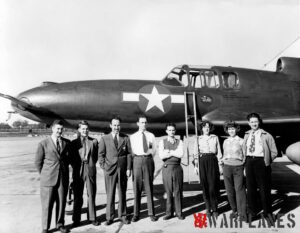
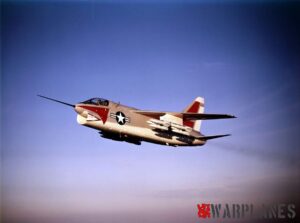
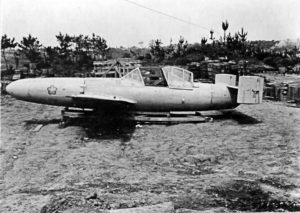


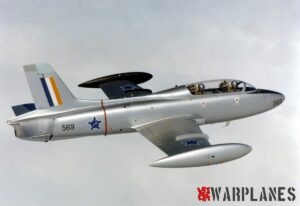
wow